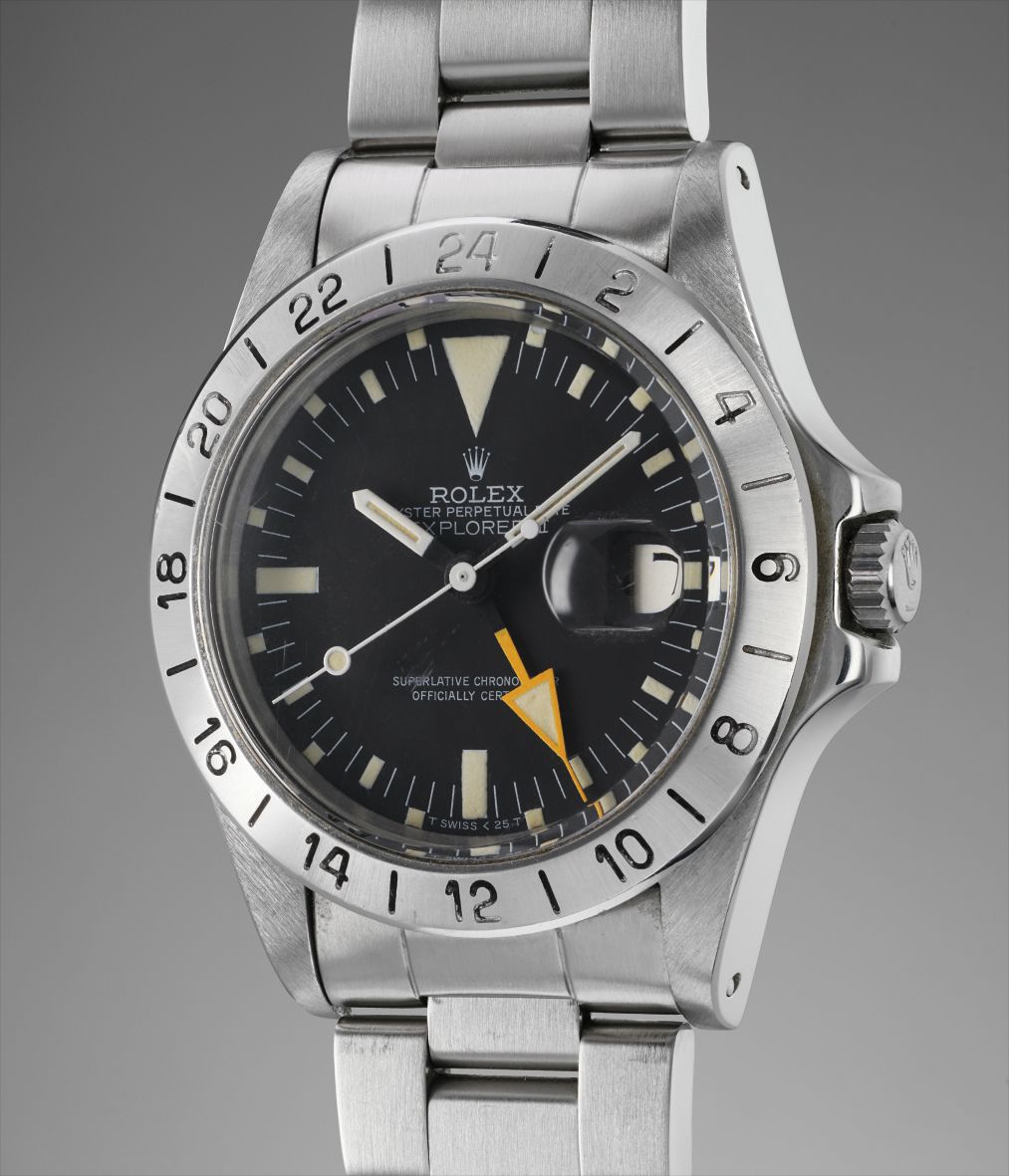



198
Rolex
Ref. 1655
Explorer II "Freccione"
A fine and attractive stainless steel wristwatch with date, 24 hour indication, bracelet and service papers
Full-Cataloguing
Due to a limited market for such specialized timepieces, this reference was not a commercial success and consequently few examples were sold. Reference 1655 is thus particularly rare.
Delightfully nicknamed “Freccione” – Italian for large arrow due to the orange hand’s prominent shape reference 1655 is also known as the “Steve McQueen”. While there is no concrete evidence confirming the actor ever wore this reference, we can easily imagine “The King of Cool” wearing this watch whilst sipping Scotch between two shoots.
The present lot with its graphic dial and playful large orange hand is a superb addition to the collection of the aficionado of uncommon sports watches.
Rolex
Swiss | 1905Founded in 1905 England by Hans Wilsdorf and Alfred Davis as Wilsdorf & Davis, it soon became known as the Rolex Watch Company in 1915, moving its headquarters to Geneva in 1919. Like no other company, the success of the wristwatch can be attributed to many of Rolex's innovations that made them one of the most respected and well-known of all luxury brands. These innovations include their famous "Oyster" case — the world's first water resistant and dustproof watch case, invented in 1926 — and their "Perpetual" — the first reliable self-winding movement for wristwatches launched in 1933. They would form the foundation for Rolex's Datejust and Day-Date, respectively introduced in 1945 and 1956, but also importantly for their sports watches, such as the Explorer, Submariner and GMT-Master launched in the mid-1950s.
One of its most famous models is the Cosmograph Daytona. Launched in 1963, these chronographs are without any doubt amongst the most iconic and coveted of all collectible wristwatches. Other key collectible models include their most complicated vintage watches, including references 8171 and 6062 with triple calendar and moon phase, "Jean Claude Killy" triple date chronograph models and the Submariner, including early "big-crown" models and military-issued variants.